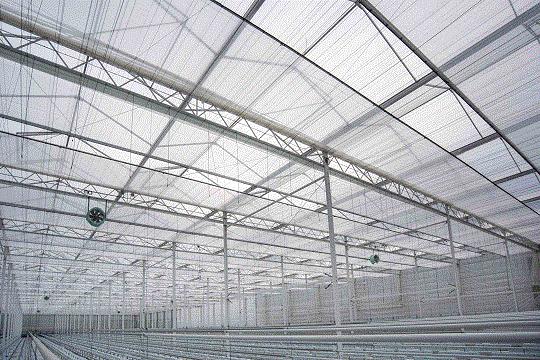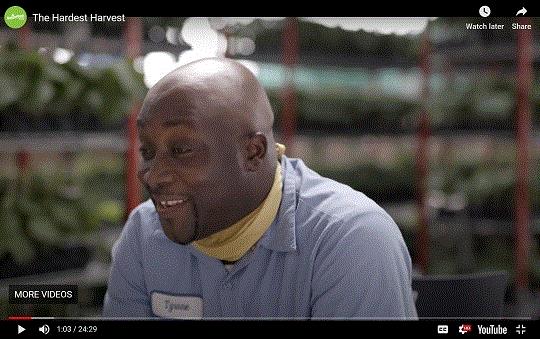CEA's Food Safety Coalition
As we approach Thanksgiving, we're in the midst of yet another romaine lettuce recall, the third such recall in three years right around the same time (although in 2019 the outbreak ranged from September through December).
It’s important to note that past outbreaks traced back to field-grown crops in Salinas Valley region in California, and in this year’s case, a specific brand was recalled: Tanimura & Antle. However, according to the CDC, the investigation is ongoing. As of November 9, 12 people were infected with E. coli from six states and five were hospitalized. Thankfully, no one has died.
The outbreak is a reminder that food crops are susceptible to contamination, and while CEA-grown crops are far less likely to be contaminated, there are still risk factors there. In fact, in my cover story for November, a SWOT analysis of the industry, virtually everyone I talked to identified food safety as one of the biggest threats to the industry. That’s why, in early 2019 after the 2018 romaine lettuce recalls, a group of CEA leafy greens growers came together to form the CEA Food Safety Coalition.
We published a Q&A with Executive Director Marni Karlin in the November print issue of Inside Grower to give our readers a better understanding of what the coalition is all about. Here’s an excerpt:

Q: What is the responsibility of the group?
MK: The Coalition is an independent and member-governed organization whose mission is to develop credible, strong and appropriate food safety standards for controlled environment production of leafy greens; educate consumers and regulators on controlled environment growing; and communicate the value of controlled environment agriculture. We are also developing a desired research agenda and trying to make connections between industry, academia and funders to promote research on questions specific to CEA production. We advocate when appropriate before Congress and federal regulatory agencies, and we engage with related associations, such as United Fresh Produce Association, to ensure the perspective of the controlled environment sector is heard.
Q: What are the key areas on which the group is working right now?
MK: Two of our top priorities right now are as follows:
-
We’re developing a CEA-specific food safety module to be adhered to in addition to an underlying food safety audit. This module will fill some of the gaps that exist in current food safety standards, vis à vis CEA production. (Existing food safety standards were, of course, written with an eye toward outdoor production and aren’t a perfect fit for CEA production.) Once we roll out this module later this year, our members will be able to adhere to it, and use a Coalition seal on-pack to communicate that adherence to consumers and retailers.
-
We’re developing a uniform set of criteria for our members who wish to use “no need to wash” labeling on their products. This set of criteria will identify the criteria that support the use of a “no need to wash” label and our members can use it in conversations with retailers.
Our priorities are driven by our membership and the substantive development of the work is done through staff-run Member Working Groups, made up of the subject matter experts from our members. So, for example, our approach to a CEA-specific food safety module is driven by the food safety experts from our members, as well as engagement with certification bodies, our Advisory Council and our Board.
CLICK HERE to read the full story starting on page 18 in the November Inside Grower.

Hortilux Introduces Two New LEDs
Growers looking to add LED lights either to existing setups or for new ranges have two new options from Hortilux: the Hortiled Top Summit and Hortiled Top Vertex. Both can allow growers to achieve high light intensity with their available electrical capacity while seeing reduced energy costs, according to the company.
The lights feature a patented passive cooling technology, as well as customized light spectrum and a five-year or 25,000 hour guarantee on light output. According to the company, in many instances, HPS fixtures can be replaced with LED fixtures without needing to modify the electrical installation and ground cables, which reduces the up-front investment.

The company specializes in both HPS and LED lighting, and can help growers create the right setup. Click the links above to find out more.
Two CEA Webinars Coming Up
I wanted to point out a couple of webinar educational opportunities coming up related to CEA growing:
GLASE (Greenhouse Lighting & Systems Engineering) is offering a free webinar Thursday, November 19 (tomorrow) at 2:00 p.m. Eastern on "The Importance of Light Quality in CEA Systems." It will be presented by Dr. Ricardo Hernandez, assistant professor at North Carolina State University, focused on CEA research and teaching. Here’s a synopsis: Spectrum has an important impact on plant growth, morphology and development. Plants have evolved a sophisticated photoreceptor system capable of perceiving small changes on the light spectrum. Plants use spectral changes as information to adapt and increase survival and reproduction. Therefore, by understanding plant-light interactions, we are able to use light as a tool to change plant responses to meet human needs. This presentation will outline the importance of light quality and provide examples of the commercial applicability of spectral manipulation.
CLICK HERE to register.
If you can’t make that one, GLASE has another coming up Thursday, December 10 at 2:00 p.m. Eastern presented by Dr. Murat Kacira, director of the Controlled Environment Agriculture Center at University of Arizona. The topic is "Dehumidification, Ventilation and Air Flow Control in CEA Systems." You can register for that one and the one above HERE.

Heliospectra is hosting a webinar called "LEDs for Your Grow, Rebates for Your Wallet" on Tuesday, November 24 at 2:00 p.m. Eastern. The webinar will be presented by cultivation and environmental expert Jake Mitchell, who will talk about how to “navigate utility rebates and incentives to finance your grow operations with energy efficient designs.”
CLICK HERE to register for the webinar. On that page, you also can find archived versions of previous webinars.

New Light Diffusing Fabric
Too much sunlight can cause problems with greenhouse tomatoes and now growers could have another alternative with Ridder’s new Light Diffusion RLD 15 FR O screen fabric, which is designed to protect crops from excessively bright light.
According to the company, Ridder developed the screen in conjunction with Duijvestijn Tomaten, a tomato grower in Pijnacker, the Netherlands.

“For Duijvenstijn’s new five-hectare unlit greenhouse, the grower needed a screen fabric that would protect the tomato crop against excessive incoming sunlight on hot summer days and offer the best possible ventilation,” the company notes in its announcement. “Together with the grower and the installer, Schermned, a new screen fabric was developed to meet the specific requirements of the grower.”
The company promotes it as a more flexible alternative to greenhouse chalking or coating that can also provide ventilation that allows excess heat to escape. Here’s how it works:
“RLD 15 FR O is composed of a combination of diffusing bands and has an open structure. When the sun is shining directly onto the screen, the fabric provides a shading factor of 13%, which gives the crop additional protection from excessive solar irradiation, but thanks to its diffusing properties it also enables the moderated light to penetrate deeper into the greenhouse. The open structure of the fabric ensures the best possible ventilation and heat regulation.”

Telling the Migrant Worker Story
NatureFresh Farms, based in Leamington, Ontario, recently released a 22-minute documentary on the experience of its migrant worker population and highlighted a key time during a COVID-19 outbreak at the farm this summer. The documentary, called “The Hardest Harvest,” interviews workers as well as Founder and President Peter Quiring, among others, about the journey of migrant workers and how the outbreak impacted the farm.
“People are going to get a lot out of this documentary, no matter how familiar they are with agriculture,” says John Ketler, Vice President, in a media announcement. “Even if you’re familiar with Guest Workers and how valuable they are to our food system, it’s not often that you get to hear from them directly about their experiences and dreams, or their perspectives on the program they’re an integral part of. Their voices deserve to be heard.”

The farm shut down at the end of June on the orders of local health officials after 191 workers tested positive for COVID-19 (none were hospitalized and everyone recovered). It reopened in early July, but lost 7.8 million pounds of produce by then, according to the video.
WATCH THE VIDEO HERE.




As always, feel free to email me at jpolanz@ballpublishing.com with comments, questions, news and views.
Until next time, stay safe and be healthy,

Jennifer Polanz
Editor-at-Large
Inside Grower
This email received by 25,058 loyal readers!
Interested in advertising in Inside Grower? Contact Paul Black or Kim Brown and they'll show you how easy, effective and affordable it is.